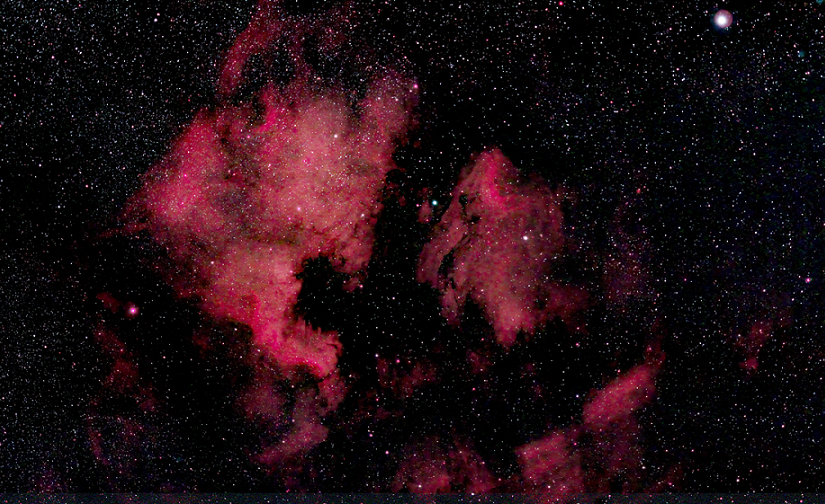Stargazing in July is always a special treat. That’s because this season marks the return of the three shimmering stars that make up the Summer Triangle: Deneb, Vega, and Altair.
The asterism (pattern of stars) that makes up the Summer Triangle really became popular within large cities over the past 75 years or so and with the writings of H. A. Rey (famous for being the author of the Curious George books).
The popularity of this asterism is a negative reminder that, with the ever-increasing amounts of light pollution, urban observers often cannot see many stars other than the three bright stars of the Summer Triangle.
However, looking at the Summer Triangle from the city helps us practice finding those three bright stars: Deneb (top left), Vega (top right) and Altair (bottom).
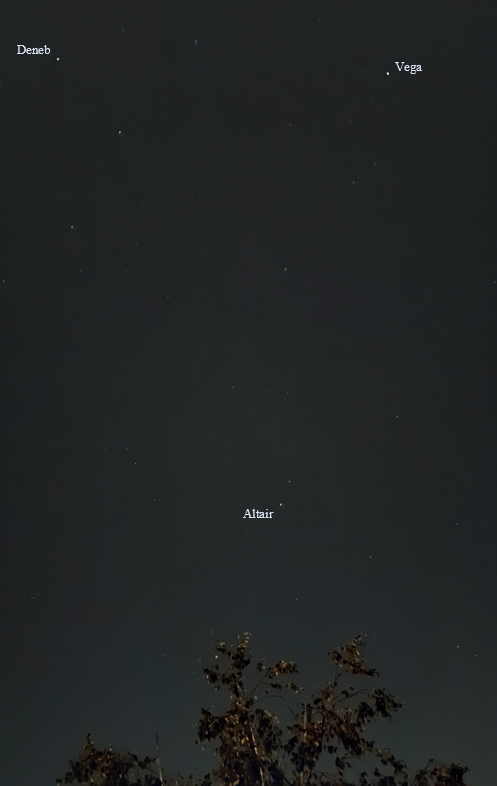
The Summer Triangle and the Milky Way
To truly appreciate the Summer Triangle and the constellations of stars and objects it encompasses, one needs to travel to darker skies.
(Might we suggest our three Dark Sky Preserves: Killarney Provincial Park, Lake Superior Provincial Park, and Quetico Provincial Park?)
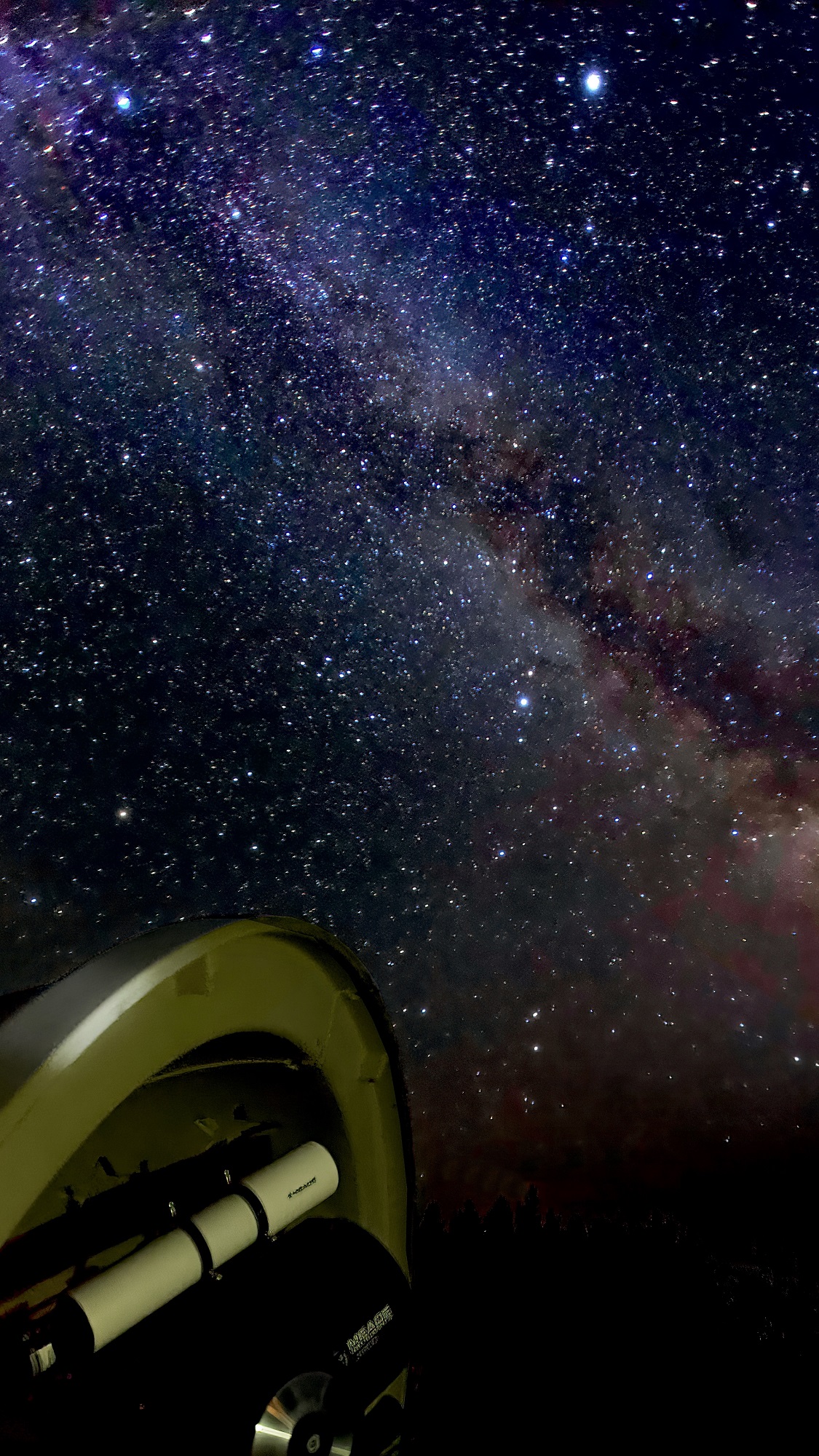
In the image of the Summer Triangle above, you can clearly see the three bright stars appear to cradle the Milky Way.
Indeed, because we are looking towards the centre of our own galaxy, the Milky Way is rich and full of interesting objects to see. If you have binoculars and are in one of our dark sky sites, you can see some of these interesting objects.
Let’s have a look at but a few of them:
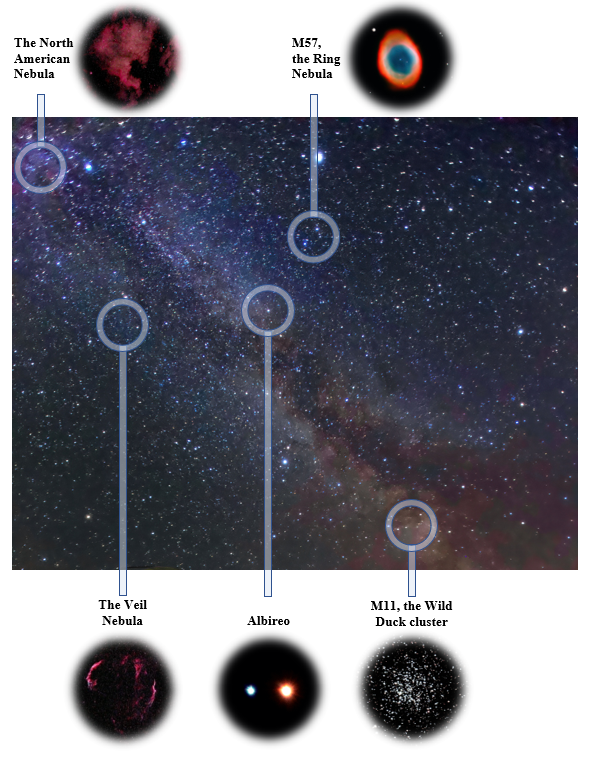
The North American Nebula
The North American Nebula is an emission nebula, an interstellar cloud of gas and dust that is charged up by nearby starlight and fluoresces like a neon sign.
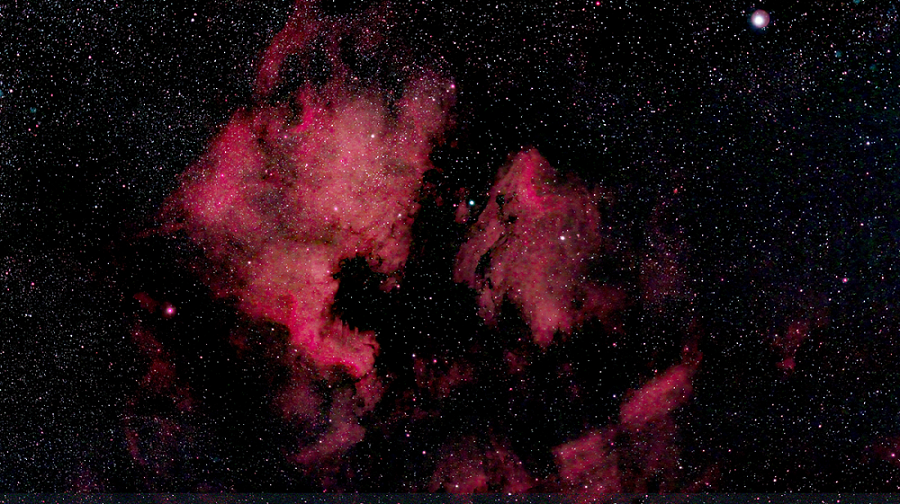
In this case, it happens to look a lot like the central and eastern part of North America. (For those of you fond of California, don’t worry that it doesn’t show up here. There is a unique nebula that looks just like California visible in the winter skies!)
The North American Nebula is located just to the left of Deneb, the top left star in the Summer Triangle.
The Ring Nebula
The vast majority of sun-like stars will generate a great deal of energy that pushes out (or outgases) a abundance of material in their last few million years of normal life. This material is energized by the radiation of a hot central star (and re-emits light that we can easily see).
M57, the Ring Nebula, is an example of a planetary nebula. This type of emission nebula appears ring-like, but is actually spherical in shape. “Planetary” nebulae were so named because in the low-power telescopes of those who first observed them hundreds of years ago, they resembled the shape and relative size of planets.
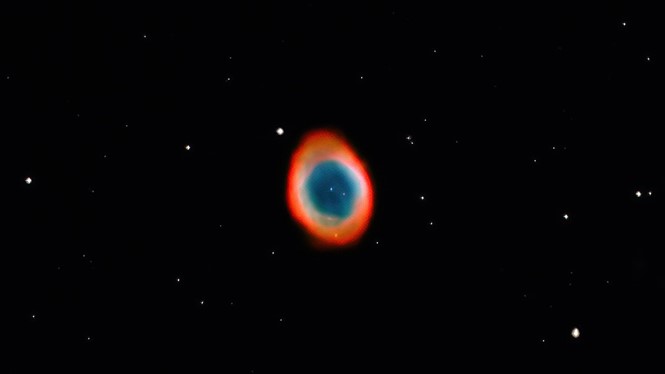
That hot central star is what astronomers call a white dwarf, the hot carbon core of what was once a main sequence star. White dwarfs may continue to shine for billions of years but, eventually, they will fade into a black dwarf, the dead ember of what was once a brilliant star.
The Ring Nebula is located just down from Vega, the top right star of the Summer Triangle.
The Veil Nebula
The end of massive star’s life is an explosive event known as a supernova. This incredible explosion rips the star apart and sends a shockwave into space.
For a brief period, the supernova may outshine its host galaxy. (In the image below, the bright dot marked by the perpendicular lines is a supernova in a galaxy, NGC 4647, 60 million lightyears away. The galaxy’s nucleus is the soft-looking star slightly up and to the right).
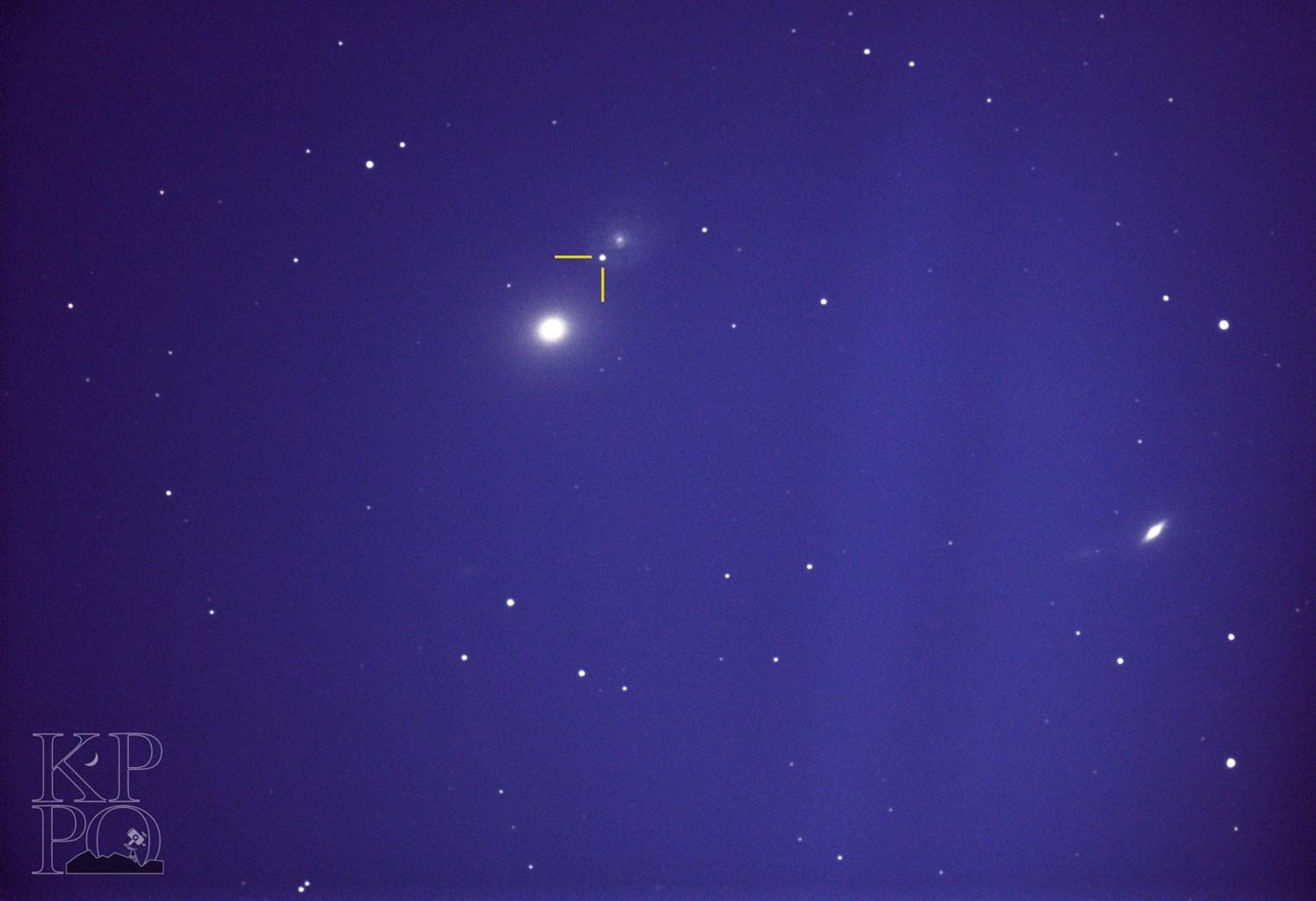
The Veil Nebula (pictured below) is the SuperNova Remnant (SNR) of a star that exploded within our own galaxy between 10,000 to 20,000 years ago.
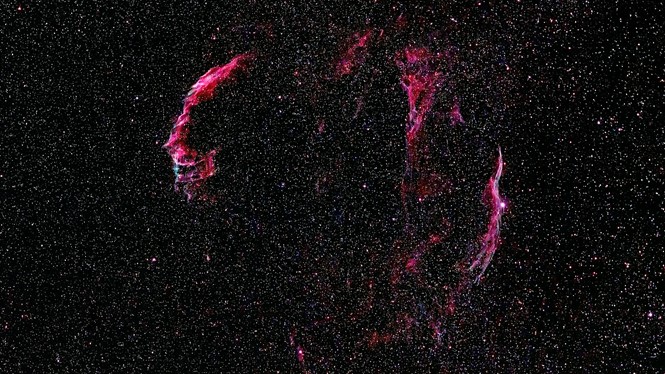
The shockwave from the supernova has spread outwards in all directions and charged up the gases that exist between the stars. This charged-up gas glows in red and is quite spectacular if photographed with the right equipment. Of the objects mentioned, this is the only one that is difficult to observe with binoculars alone.
It is located just down and to the left of Deneb, the top left stars of the Summer Triangle.
Albireo
Deneb, the upper left star in the Summer Triangle, also marks out what is known as the “Northern Cross.” Four stars, including Deneb, can trace their way down and towards the right, ending at the star Albireo.
Albireo is a double star, although astronomers are still determining if the two-colour contrasting stars are physically bound to each other through gravity or just an optical double making it look like they are part of a single system.
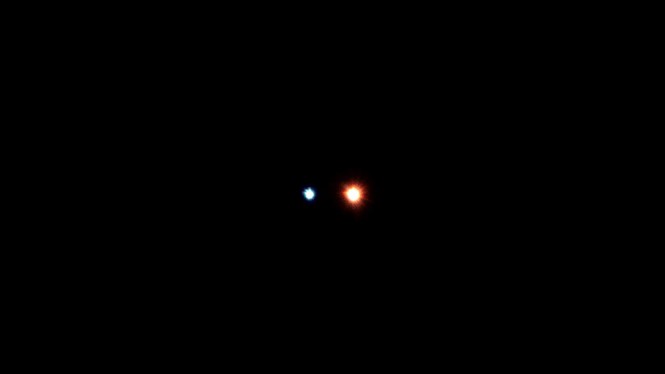
Albireo is perhaps one of the most famous double stars in that it’s relatively bright and of a beautiful blue and gold appearance.
The double star’s colours are directly related to their mass and life stage. The blue star on the left is a hot, main sequence star that is more than twice the mass of our sun. Its surface temperature is very hot, creating the blue colour. In contrast, the amber star on the right is an example of a star that has left the main sequence and is now a red giant star. Its outer atmosphere has puffed up and cooled, hence the red colour.
The Wild Duck Open Cluster
Newly formed stars produce tremendous pressure caused by the radiation they emit that pushes at the nebular cocoon of gas in which they formed. What remains is a loose cluster of stars.

The Wild Duck Open Cluster (M11) is one of the richest open clusters in the sky, composed of a thousand stars.
It is located down and to the right of the Altair, bottom star of the Summer Triangle.
Want to learn more about the stars you can see in Ontario Parks? We’ve got you covered!
